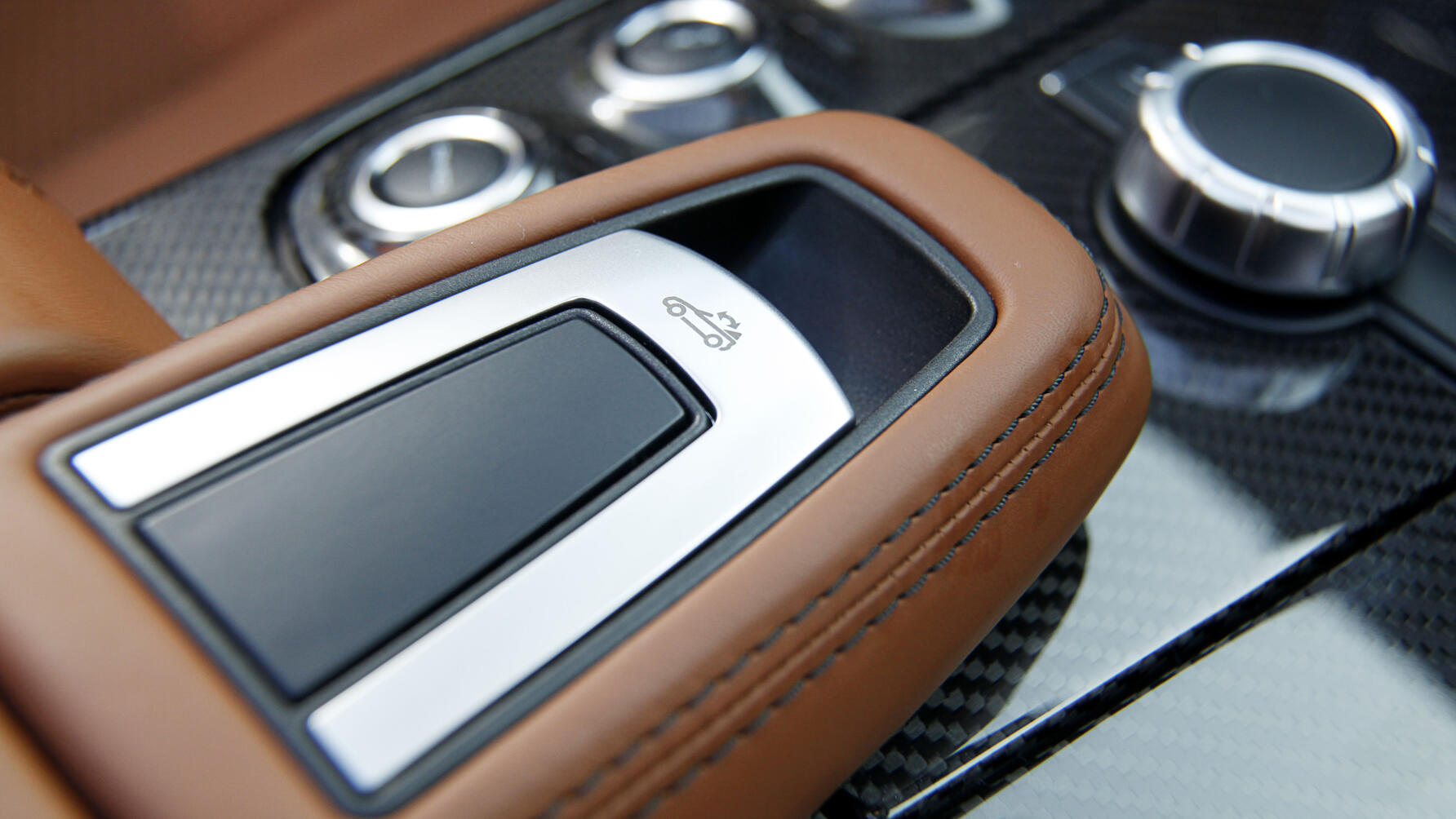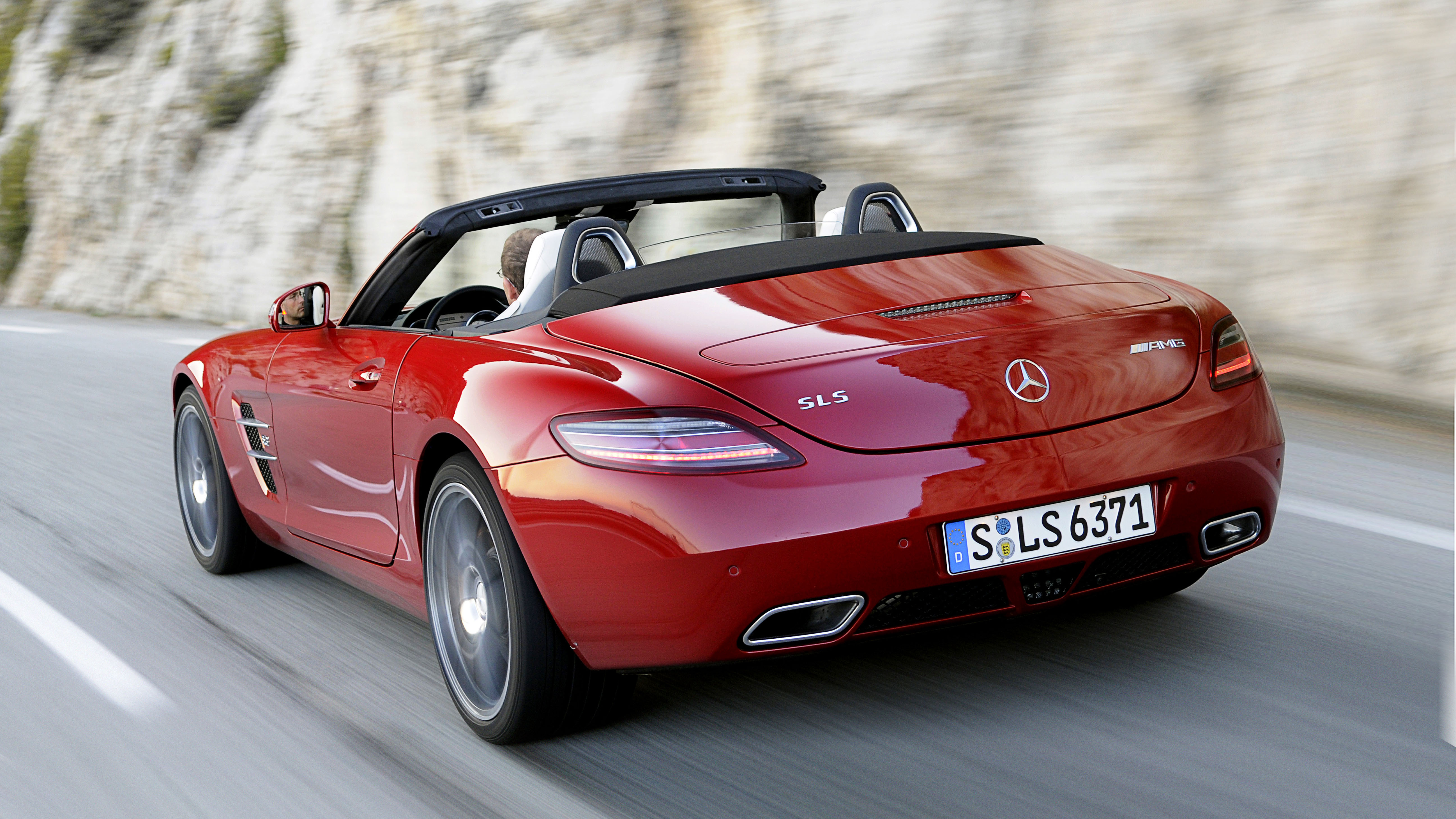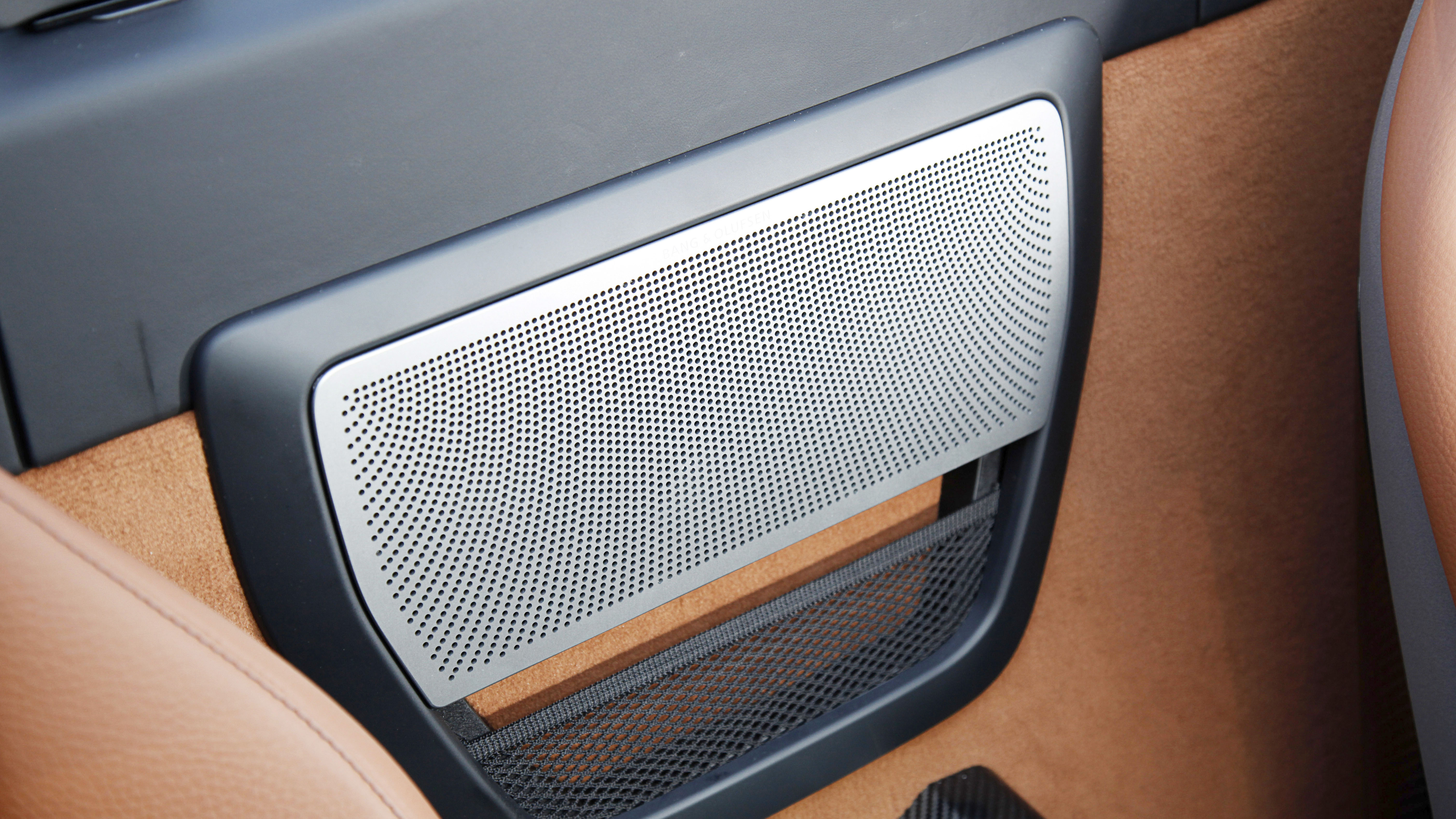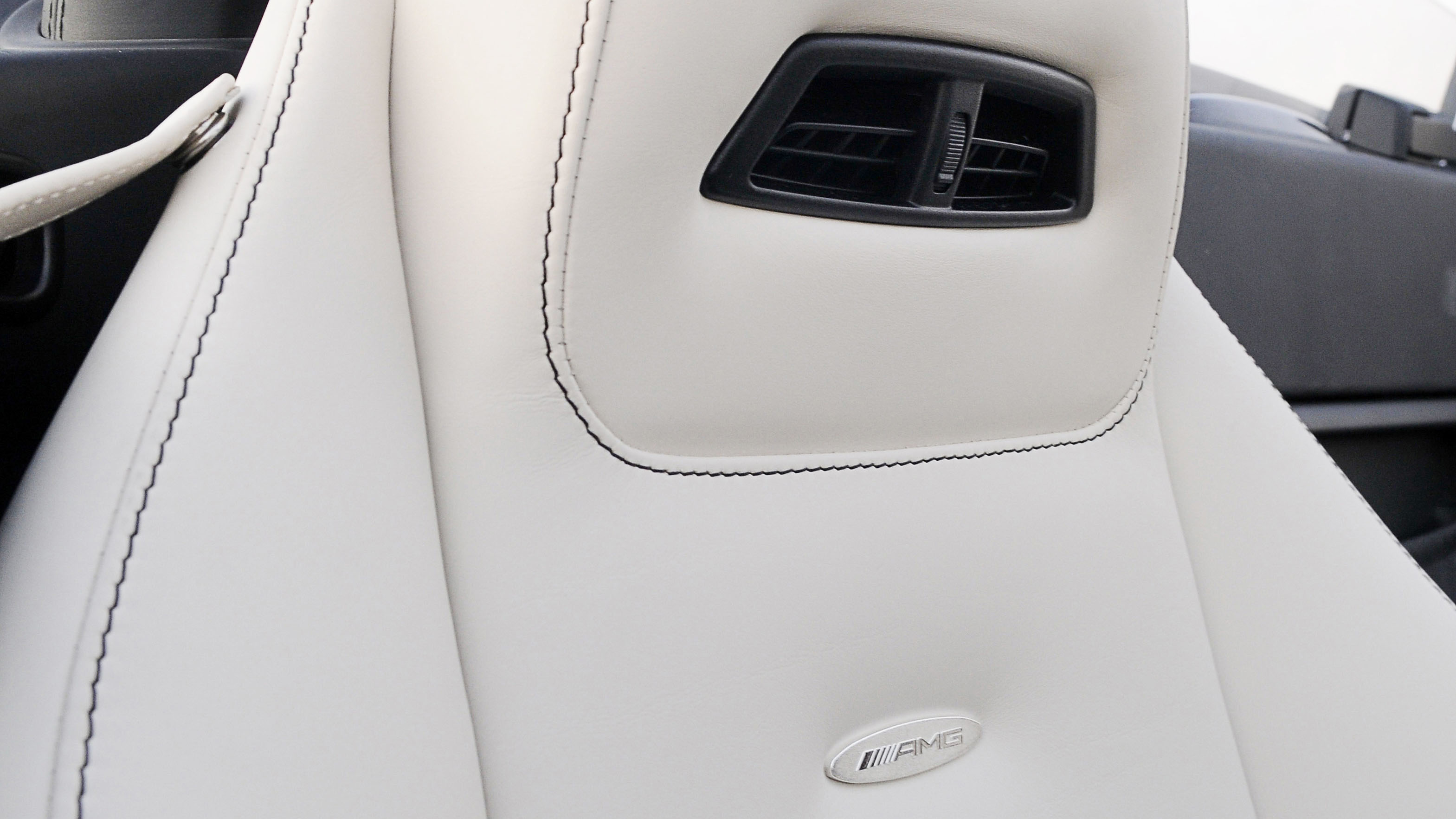
SPEC HIGHLIGHTS
- BHP
571bhp
- 0-62
3.8s
- CO2
308g/km
- Max Speed
197Mph
- Insurance
group50A
This review was first published in Issue 223 of Top Gear magazine (2011)
As supercar makers often do, Mercedes-AMG chose Monaco as the place to let us have the SLS Roadster. This is not a place for going fast – well, not except for two hours on one Sunday of the year, and then only for a strictly limited number of drivers. Normally, the traffic moves like treacle; there are loads of expensively fast cars here, but they’re all confined like cheetahs in a tiny zoo cage. If supercars could wear facial expressions, theirs would be baleful and unfulfilled.
It’s especially poignant for Mercedes sports cars. The SLS and AMGs have always had a reputation as favoured transport for a certain kind of Monte Carlo wealth. Even before we drive it, then, Top Gear knows that the SLS Roadster will doubtless be a heck of a lot better a sports car than it needs to be to please those buyers. In this environment, all it needs is style and luxury, a tolerably plush ride, and the ability to glide through the traffic in auto mode without jerking or stuttering.
To that end, there’s a new suspension option, of adaptive dampers with three settings, including a decently pliable comfort mode. Thus equipped, the ride isn’t as remarkable as a McLaren MP4-12C’s, but it’s not jarring or bone-shaking. And the twin-clutch transmission is attentively smooth in gentle auto-mode driving. Its annoyances come to light when you’re going hard, strangely.
And, of course, its other job down in Monte is to impress everyone in the pavement cafés. No bother, there. The Roadster, bar the obvious exception that it doesn’t have gullwing doors, knows exactly how to make the very most of the SLS’s assets: long bonnet and speedboat-like tapering tail. There’s enough decorative appliqué to please the Bulgari-wearing set, but the big wheels and the sheer number of air inlets and extractors make it look like it does actually mean business. So does it? Cobblers to the crowded riviera. Time to point the loooooong bonnet inland, up some mountain cols. Ah yes, business is very much on the agenda. the engine is almost comically sure of itself. On the way up through the revs, there’s all the colossal torque you’d expect from a big, fat 6.2-litre lump. Then comes a hell-bent urgency in its full-throttle race to the red line, which is at 7,500, but feels lower because you get there so soon. And, because it does perfectly well without a turbo, thanks, there’s never ever any doubt that it’s going to do its stuff right now, almost before you’ve asked.

All of which you get in the Gullwing, of course, but the Roadster makes it yet more insanely, magically vivid because it puts you at the heart of the soundstage. As you accelerate, it’s like you’ve found the biggest lion in the jungle and yanked really hard at its tail. On the over-run, 5 November comes firing and banging out of the tailpipes. It’s not quite a perfect powertrain, though: for all the throttle’s immediacy, in manual, the ’box has an infuriating latency, a half-second delay between pulling the paddle and getting the shift. Poor: Ferrari and McLaren avoid this.
The new adaptive damping’s sport mode, which is definitely the one for quick road driving is, engineers say, about the same as the regular chassis set-up, and the roadster’s weight is only 40kg up on the Gullwing’s. (The Roadster’s bodyshell was actually the first of the pair to be engineered, on the grounds that if that was stiff enough, the coupe would surely be fine.) Weight distribution is unchanged, too – quite rear-biased, because the V8 is behind the front wheels and the gearbox is at the back. So you won’t feel any difference in the way they handle.
To begin with, I wasn’t sure if it suited me: this is one of those cars that never seems to weight up its front tyres. (ok, racing drivers love them, but I’m a road driver.) The steering’s quick, if just the right side of nervous, and, as soon as you ask, it dives into the corner and immediately throws all the action onto the back tyres. That’s how you know how much grip you’ve got: the rear’s always telling you. Not sliding – if you have the ESP in the sport setting, it stays safe – but also ever wriggling, ever alive. And so are you. In the end, I got converted and very definitely didn’t want to stop. People say the SLS is tough at the limit, and I don’t doubt it or wish to go there, but it’s a hoot when you stay inside the edge, because it tells you.
This is proper supercar stuff: 571bhp, all that noise, all that acceleration and ceramic-braked stopping, all that cornering joy. I’m transfixed. It’s every bit of the occupation I need or want.
But there’s more to distract you if you care for it. Launched on the Roadster, but soon coming to the Gullwing, is a new bunch of AMG readouts on the nav screen. You can call up real-time power and torque readings, and throttle and brake percentages. or longitudinal and lateral g. I’ll watch the road, thanks, but it’ll give your passenger something to think about. Or, on tracks that it recognises (you can’t use your ring-road street circuit, or indeed Monaco), it’ll record all those readings, plus lap times, in a set of telemetry traces you can download and analyse later. Also new is a full internet connection that runs Android, so you’ll soon be able to download car-related apps.
Top Gear
Newsletter
Thank you for subscribing to our newsletter. Look out for your regular round-up of news, reviews and offers in your inbox.
Get all the latest news, reviews and exclusives, direct to your inbox.
Before the Roadster arrives, the SLS is already the best-selling of all the £150k supercars. It’s usable but it’s charismatic in a way other Mercs can only dream of. The Roadster takes it one louder. At least one, actually.
Featured

Trending this week
- Car Review
BMW iX3






